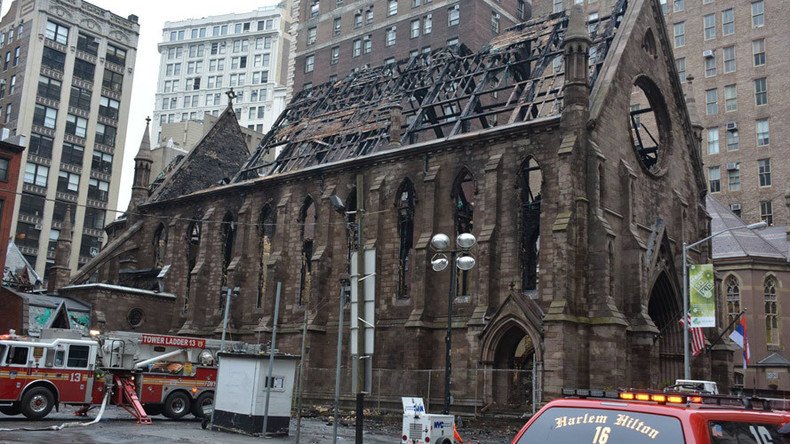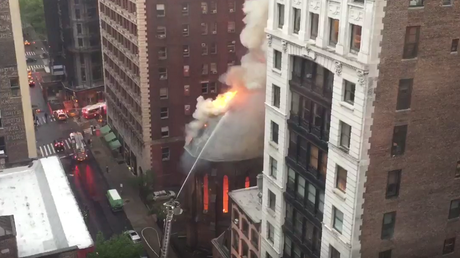NYFD says candles, not Nazis, to blame for NYC church fire

Smoldering candles may have started the four-alarm blaze that gutted the Serbian Orthodox cathedral in Manhattan on Easter, New York City fire officials have said. Three more Orthodox churches also went up in flames on Sunday.
The fire at Saint Sava Cathedral on West 25th Street started around 7 p.m. local time on Sunday, just hours after the congregation held an Easter service. Orthodox Christians celebrated Easter on May 1 this year.
On Tuesday, New York fire officials said they were looking into the theory that a caretaker may have placed candles that were still smoldering into a cardboard box for disposal, AP reported. The fire was most likely an accident, New York Fire Department (FDNY) Commissioner Daniel Nigro told reporters, according to the New York Daily News.
Four other Orthodox churches around the world were damaged or destroyed by fire on the same day, however, prompting some to suspect foul play. A Greek church in Melbourne, Australia was damaged and a Macedonian church in Sydney was completely destroyed. Easter celebrations at the historic Valaam Monastery in Russia were interrupted by a blaze in the guest quarters.
READ MORE: Fire rages at Russia’s revered Valaam monastery (VIDEO)
“Too many churches have burned to call it an accident,” Dusan Batakovic, a former Serbian diplomat and currently director of the Institute for Balkan Studies in Belgrade, told the New York Post.
“It is very strange that it happened, that the fires all took place on Easter, the greatest Christian Orthodox holiday,” he said. “Some kind of terrorist action cannot be excluded.”
Batakovic said the fires may have been set in anger over the Serbian Orthodox Church’s resistance to the canonization of Cardinal Aloysius Stepinac, the Croatian cleric who served as the vicar-general to the Nazi-allied Croatian state during World War II. The Croatian Nazis, known as the Ustasha, engaged in a campaign of mass murder against the Serbs, Jews and Roma between 1941 and 1945.
At Saint Sava, parishioners gathered on Monday to pray, using three rocks from the rubble to symbolize their lost house of worship. Though the interior of the church was completely destroyed, the two crosses on the roof remained standing – as did the Serbian and American flags hanging from the front of the building.
The Gothic Revival-style cathedral, built in 1850, was a creation of architect Richard M. Upjohn. It was home to the first Orthodox service on the East Coast in 1865, and was eventually sold to the Serbian Orthodox Church in 1943. Among the notable people who worshipped at the cathedral were Bishop Nikolaj Velimirovic and exiled King of Yugoslavia Petar II.













